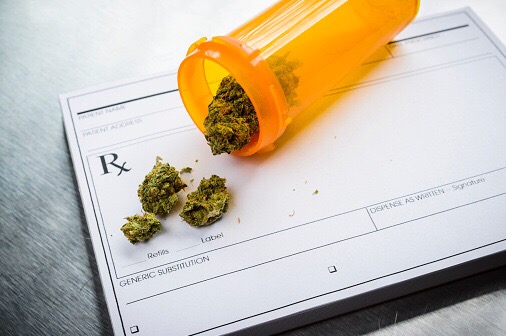Controversy Continues: Medical Marijuana in Workers’ Compensation
During a session at the RIMS 2017 Annual Conference, Kevin Glennon, VP of Clinical Programs, One Call Care Management, and Markie Davis, Risk Manager, State of Colorado, discuss medical marijuana. As the push for legalization continues, let’s explore the hailstorm of medical, legal and regulatory questions this brings.
Federal Law
The Controlled Substances Act categorizes marijuana as Schedule 1 substance, with a high potential for abuse and no legitimate therapeutic uses, possession for personal use is a misdemeanor, cultivation and distribution are felonies. Currently 28 states now have legalized marijuana for medicinal use.
Since marijuana is a schedule 1 substance per CSA, it is illegal to distribute, prescribe or purchase in the U.S. This prohibits assigning NDC or procedure code for billing purposes. Marijuana is not FDA approved to treat any medical conditions or diseases and not FDA approved to treat any common workers’ compensation injuries.
On April 9, 2017, lawmakers just introduced three new marijuana reform bills in Congress. This would be the most comprehensive marijuana bill proposed to date. The Path to Marijuana Reform packaged plan contains three bills with separate purposes: Small Business Tax Equity Act, Marijuana Policy Gap Act, and Marijuana Revenue and Regulation Act.
Medicinal Value
Current literature documents various medical uses. Delivery includes inhalation (smoked or vaporized) or oral ingestion (pill form or edible added to foods), contains 60 active ingredients known as cannabinoids. The primary psychoactive cannabinoid in marijuana is THC that gives you the “high” feeling. Potential therapeutic uses include fibromyalgia, ALS and multiple sclerosis to name only a few. Marijuana is not FDA approved as safe and effective medication. Marinol is the only version currently approved by FDA. This is a man-made synthetic.
Can medical marijuana help end the opioid epidemic? Since 1999, overdose deaths in the U.S. involving opioids have quadrupled. Over $72 billion in medical costs in the U.S. each year, kills 80 Americans every day. Medical experts believe medical marijuana could play a critical role in combating opioid epidemic. Many studies show correlation between states legalizing medical marijuana and a drop in painkiller prescriptions, opioid use and deaths from opioid overdoses.
Colorado Driving and the Legalization of Marijuana
The legal limit for driving while under the influence of marijuana is less than five of active THC in blood, enforced in the same manner as alcohol. So what does this mean? It is hard to tell. Some users will be well above the limit three hours after using and other will well below the legal limit. There is no recognition in the legislation that the effects of marijuana and alcohol together maybe more than the sum of their parts.
The downside of legalization of marijuana in Colorado is still evolving. Some of the downsides include marijuana being transported across state lines, and conflict between State and Federal law will end to be resolved in banking. Overall there seems to be less problems than anticipated


